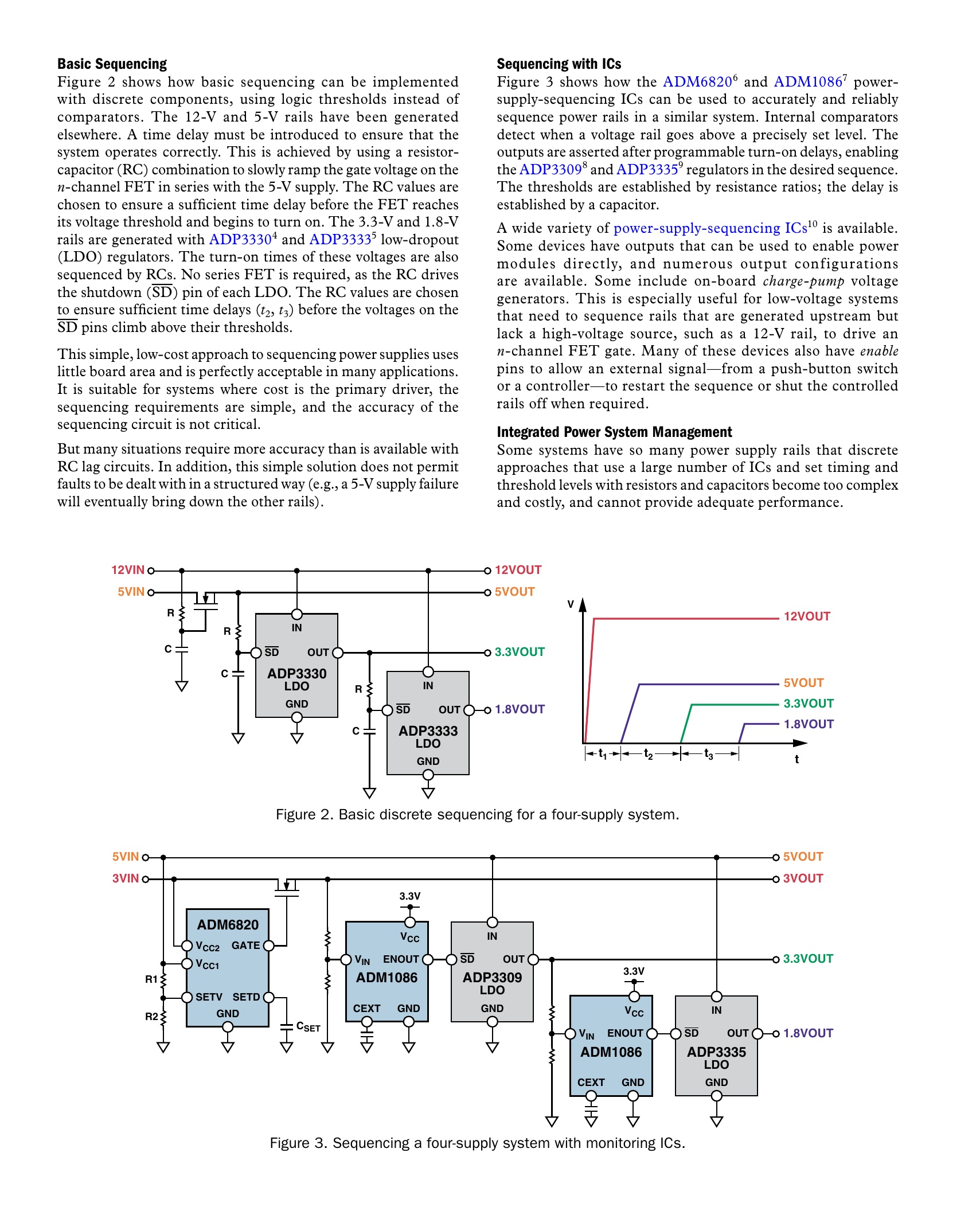Power Supply Management—Principles, Problems, and Parts:INTRODUCTION
Power supply designers are using flexible supply monitoring,
sequencing, and adjustment circuits to manage their systems.1
This arTIcle discusses why and how.
The monitoring and control of a growing number of power-supply
voltage rails has been vital for safety, economy, durability, and
proper operaTIon of electronic systems for many years—especially
for systems employing microprocessors. Determining whether a
voltage rail is above a threshold or within an operaTIng window—
and whether that voltage is powered on or off in the correct
sequence with respect to the other rails—is crucial to operational
reliability and safety.
Many methods exist to solve various aspects of this problem.
For example, a simple circuit using a precision resistive divider,
comparator, and reference can be used to determine whether
the voltage on a rail is above or below a certain level. In reset
generators, such as the ADM803,2 these elements are combined
with a delay element to hold devices—such as microprocessors,
application-specific ICs (ASICs), and digital signal processors
(DSPs)—in reset while powering up. This level of monitoring is
adequate for many applications.


暂无评论